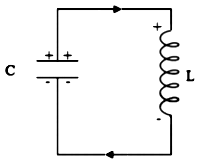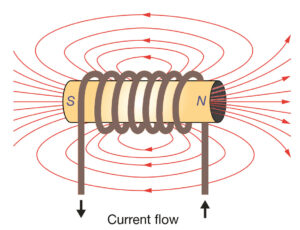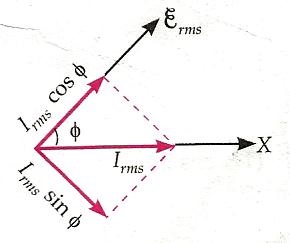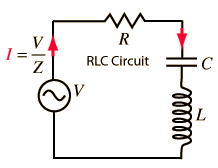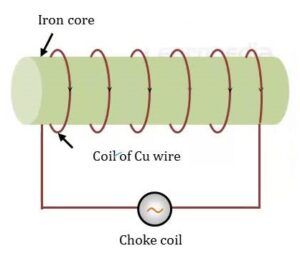In this short piece of the article, we are going to derive an expression for the RMS value of an alternating voltage, so let’s get started…
Root mean square value of an alternating emf
It is defined as that value of a steady voltage that produces the same amount of heat in a given resistance as is produced by the given alternating emf when applied to the same resistance for the same time. It is also called the virtual or effective value of the alternating emf. It is denoted by $\varepsilon_{r m s}$ or $\varepsilon_{e f f}$ or $\varepsilon_{v}$.
Read Also
Alternating current class 12 – amplitude, time period, frequency
Relation between the RMS value and the peak value of an alternating emf

Suppose an alternating emf $\varepsilon$ applied to a resistance $R$ is given by $$ \varepsilon=\varepsilon_{0} \sin \omega t $$ Heat produced in a small time $d t$ will be $$ d H=\frac{\varepsilon^{2}}{R} d t=\frac{\varepsilon_{0}^{2}}{R} \sin ^{2} \omega t d t $$ Let $T$ be the time period of the alternating emf. Then heat produced in time $T$ will be
| $$ \begin{aligned} H &=\int d H=\int_{0}^{T} \frac{\varepsilon_{0}^{2}}{R} \sin ^{2} \omega t d t \\ &=\frac{\varepsilon_{0}^{2}}{R} \int_{0}^{T} \frac{(1-\cos 2 \omega t)}{2} d t=\frac{E_{0}^{2}}{2 R}\left[t-\frac{\sin 2 \omega t}{2 \omega}\right]_{0}^{T} \\ &=\frac{\varepsilon_{0}^{2}}{2 R}\left[(T-0)-\frac{1}{2 \omega}\left|\sin \frac{4 \pi}{T} t\right|_{0}^{T}\right] \\ &=\frac{\varepsilon_{0}^{2}}{2 R}\left[T-\frac{1}{2 \omega} \sin (4 \pi-\sin 0)\right] \\ \text { or } \quad H &=\frac{\varepsilon_{0}^{2}}{2 R}[T-0]=\frac{\varepsilon_{0}^{2} T}{2 R} \end{aligned} $$ |
If $\varepsilon_{rms}$ is the root mean square value of the alternating emf, then the amount of heat produced by it in the same resistance $R$ in the time $T$ will be $$ H=\frac{\varepsilon_{rms}^{2} T}{R} $$
Read Also
- Expression for the RMS value of alternating current for a full cycle
- Derive an expression for the average or mean value of AC for half cycle
From the above two equations, we get $$\frac{\varepsilon_{rms}^2 T}{R}=\frac{\varepsilon_{0}^2 T}{2R}$$ $$\text{Or}\qquad \varepsilon_{rms}=\frac{\varepsilon_0}{\sqrt{2}}=0.707\varepsilon_0$$
Stay tuned with Laws Of Nature for more useful and interesting content.

